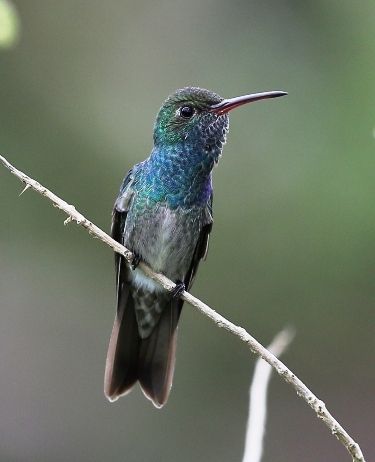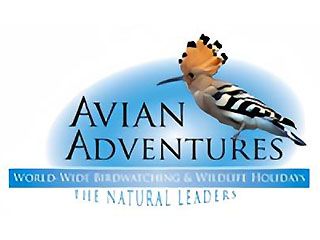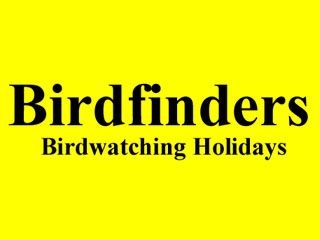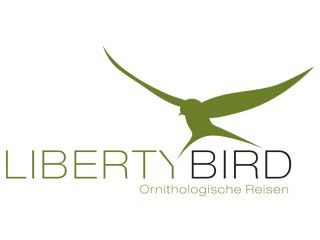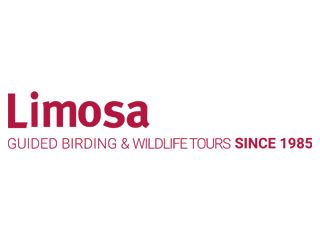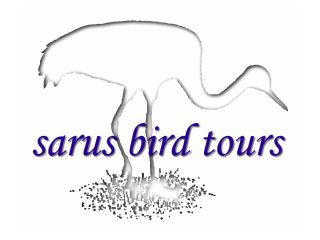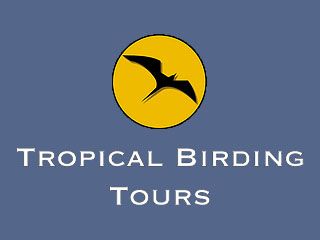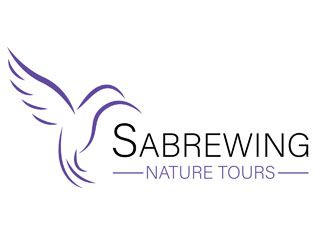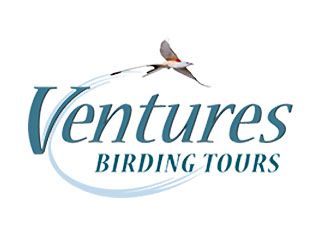Ecotours Worldwide - Stop Dreaming - Start Booking
Honduras 13-days through USA
Honduras surprisingly is not heavily visited yet by birders, however it has the largest percentage of fully forested areas in all of Central America. Vegetation varies from lush tropical rain forests, amazing cloud forests through pine forests, savannas, mangroves and coastal lagoons. Lot of these are protected areas and home to more than 750 bird species, including such sought-after ones like Lovely Cotinga, Honduran Emerald, Keel-billed & Tody Motmot, Prevost’s Ground Sparrow, Resplendent Quetzal, Black-crested Coquette, Tawny-throated Leaftosser, Ruddy Crake and many more.
Beside good birding Honduras offers some excellent lodges with amazing on-site wildlife viewing possibilities. The country's top lodge is at Pico Bonito National Park where we spend the major part of the holiday, but there are several other good birding sites to visit from Lancetilla Botanical Gardens through Cerro Azul & Santa Barbara National Parks or Yojoa Lake just to mention a few.
The more we visit Honduras, the more we want to return! We truly hope you will feel the same after a successful tour with us there, so please come and join to discover this beautiful country!
Fact File
-13 days with 3 great accommodations including Honduras' best ecolodge for 5 nights
-we can offer similar tour with direct BA flight from London to Cayman Islands, birding there, followed by Honduras
Highlights
-visiting Central America's largest Botanical Garden, a top birding site
-staying at and visiting Santa Rita, Cerro Azul & Pico Bonito National Parks
-300-400 species including many rarities, regional endemics
Accommodation
-2nights at Tela at the Caribbean seaside, just minutes away one of the top birding sites
-3 nights at Cerro Azul National Park with perfect onsite birding
-5 nights at Pico Bonito Lodge, Honduras top ecolodge & premier birding site
Price
http://www.ecotours-worldwide.com/dates-prices
Ask for the actual price.
Our price includes:
- all travel as noted in the itinerary;
- all accommodation based on shared rooms (most rooms are twin bedded), at most locations there are single rooms as well for extra charge (Please ask for a single room at the time of booking!);
- 3 meals per day, generally breakfast at the accommodation, packed lunch, dinner (consists of at least two courses);
- services of the leader(s);
- trip materials.
Not included:
- flights to and from the destination country;
- optional programmes to places of interest and entrance fees involved;
- airport and other departure taxes, tips;
- food beyond generally 3 meals/day mentioned in the itineraries;
- excess baggage charges;
- telephone calls;
- alcoholic beverages;
- compulsory personal insurance.
If you have questions about the inclusion of any cost item, please contact us.
Activity level
Generally easy to moderate walks, some slopes can be steep, but short
Lots of onsite wildlife observing possibilities
Weather generally favourable, rain possible
Itinerary
Day1 Start from London in the evening, overnight flight.
Day2 Change planes in the US, arrive to San Pedro Sula, Honduras around midday.
Please note that if you prefer to avoid travelling through the US we offer Honduras with combination of the Cayman Island which is served with a direct flight from UK! Please ask for details of a bit different itinerary and dates!
After arrival we transfer to Tela at the Caribbean seaside. On the way we can see our first Honduran birds, such as Great-tailed Grackle and Tropical Kingbird.
We spend 2 nights here at the Tela Bay on the Caribbean seaside which is a good place for Ibises, various Herons & Egrets, groups of Gulls & Terns, Sandpipers and other shorebirds. But the main reason to choose this location is to be just 15 minutes away from an excellent lowland tropical forest birding area which we discover tomorrow.
Day3
From our accommodation with a short drive we can arrive to the nearby famous botanical garden of Honduras. The Lancetilla Botanical Garden is actually one of the largest tropical gardens in the world. It is partly the original tropical forest and partly mature and mixed plantations of tropical vegetation from all over the world. This protected nature reserve is not just home to a wide variety of trees, but also to over 300 species of birds, including toucans, tanagers, orioles, trogons, motmots, antbirds, a variety of colourful parrots and many more. Without trying to make a full list here we just mention a few species we got on our last tour here just during one morning: Blue-black Groesbeak is quite common, such as Groove-billed Ani, but soon we find Black-headed Trogon and not much later Violaceous Trogon as well. A flash of amazing colour reveals Passerini’s Tanager, but Collared Aracaris and Keel-billed Toucans immediately trying to steal the show. High in the canopy Masked Tytira making its strange calls not too far from a Baltimore Oriole & a Rose-throated Becard. By checking the aging, moss-covered tree-trunks we should find both Cocoa and Streak-headed Woodcreepers, but Chestnut-headed Woodpecker is also a nice surprise. Great Ant-shrike can be very vocal. As a Grey Hawk flies across makes some of the Blue Ground-doves panicking. But a much bigger alarm is caused by a Ferruginous Pygmy Owl call which collects dozens of species to one area. The crowd includes Long-billed Gnatwren, Summer Tanager, Olive-backed Euphonia, Orange-billed Sparrow, Tawny-crowned & Lesser Kinglet, Long-tailed Hermit, Worm-eating Warbler, Grey Catbird, Yellow-bellied Tyrannulet, Ochre-bellied Flycatcher and Red-throated Ant-tanager. Not bad for a short stop!
After the morning birding when we start to feel a bit tired and hungry we go back to Tela to have a nice lunch with a refreshing Caribbean breeze. But Lancetilla offers such a fantastic birding with great diversity that soon we will dream about to return. So no wonder we will spend the whole day there discovering the several well- maintained trails which offer easy walking and birding along the way. So during the afternoon we discover what more the Botanical Garden can offer, such as Rufous-tailed-, Stripe-tailed and Scaly breasted Hummingbird, the smashing Blue-crowned Motmot or the secretive Slaty-breasted Tinamou. Chestnut-headed Oropendulas move in the canopy in small groups. We have a good chance for Rufous-tailed Jacamar as well, but a really hard to get bird is Thrushlike Schiffornis, which last time we not just heard and seen, but even took some great pictures as well. Later in the afternoon when we feel so we return to our base at Tela for a last night there.
Day4
Today we travel South towards the gorgeous hills of Santa Barbara and Cerro Azul, both protected by National Parks. If you interested we might stop at the famous Pulhapanzak Waterfall and then continue with birding around Lake Yojoa first. There are several Snail Kites hunting for large-sized snails, while big group of ducks and waders should be around as well. Beside checking Egrets & Herons we should keep an eye on the dense vegetation for Ruddy Crake. The surrounding flowering bushes and trees offer great feeding tables for several songbirds, including hummingbirds as well. We will also enjoy a great lunch at a lake shore restaurant where we will be surrounded by birds. Also we visit an interesting boardwalk through mature wet forest full with various birds.
During the afternoon we drive up to the Cerro Azul National Park which protects huge tracts of rainforest and cloud forest. We stay 3 nights at this superb place. Not just views are breathtaking, but its forests boast one of the highest levels of biodiversity in the country. Imagine a huge area where more than 85% is covered by primary forest. Just from our accommodation there are plenty of trails starting to different directions, each offering great tropical forest birding.
Sometimes Black-crested Coquette is really close to our accommodation, while Green-breasted Mountain Gem can be found at the flowering bushes nearby the restaurant area. It is quite easy to find Keel-billed Toucan and also the noisy, but colourful Green Jay when it is around. Much more challenging species include Keel-billed Motmot, Black-faced Ant-thrush, Tawny-throated Leaftosser or Slate-coloured Solitaire. Nigh at Cerro Azul
Day5
Today we spend the full day birding on site at Cerro Azul. We might start early morning with a few minute drive down to a dam. We have a good chance for Grey Hawk and even Collared Forest-Falcon here. Cattle Egret, Killdeer, Little Blue Heron, Black-crowned Night Heron are typical birds here, but we had Sungrebe swimming across the lake as well.
We check an area for Prevot’s Ground Sparrow – this is a different race that you might have seen before in Costa Rica! The trail leading there and the area can yield Spot-breasted Wren, Green Backed Sparrow, Rufous-browed Peppershrike, Greyish Saltator, several different Warblers, like Yellow, Chestnut-capped and Chestnut-sided.
In the morning Red-lored Amazons and Olive-throated Parakeets fly out to find good feeding areas. Both Summer, Passerini’s & Crimson-collared Tanagers are present. Brown Jays alarm from time to time. Other species to mention include Grey Catbird, Masked Tytira, Woodtrush. Beside White-tipped Dove with great luck we might find a Ruddy Quail Dove as well. Ant-specialists include Red-throated Ant-tanager, Barred Antshrike & Dusky Antbird, while Flycatchers will be represented by Dusky-capped Flycatcher and Bright-rumped Attila. Balck & White and Magnolia Warblers, plus Buff-throated Saltators are quite common, but we might find Turquoise-browed Motmot and Blue-winged Warbler as well. We should check the tree-trunks for Barred Woodcreeper, Olivaceous Piculet and Lineated Woodpecker. Both Orchard Oriole and Spot-breasted Oriole should be around. A bit harder to spot White-breasted Wood-wren or White-collared Manakin, but we try our best. We check a place for Ruddy Crake alongside the road as well.
Before lunch we take one of the trails, perhaps the one which goes down to a cascade. Both Louisiana and Northern Watertrush should be around offering a great opportunity to compare the two species. It is not an easy walk, but we will take our time and will be energized regularly by new exciting sightings such as White-collared Manakin, Violaceous/Gartered Trogon, Black headed Trogon, Rose-throated Becard, Boat-billed Flycatcher and a number of Woodcreepers such as Tawny-winged, Ivory-billed, Olivaceous & Barred. Tree-trunks and branches are worth to check for other species as well, such as Golden-olive & Smoky Brown Woodpeckers.
After this hike we refresh ourselves and have a lunch. After lunch in the late afternoon we can spend some time with checking out the Humminbird feeders where we should have the following species: Violet Sabrewing, White-bellied Emerald, Rufous-tailed Hummingbird, Long-billed & Little Hermit, Green-fronted Mountain Gem. Yellow-bellied Tyrannulet, Lesser Greenlet, Northern Bentbill, Olive-sided Flycatcher and Squirrel Cuckoo is usually around as well, but sometimes even here we can find the beautiful Keel-billed Motmot.
If we still have energy we might take another loop trail where there are different new platforms and lookout towers to observe birds & other wildlife. Nigh at Cerro Azul.
Day6
We start early with breakfast and then drive to Santa Barbara National Park which is about an hour away. The place we visit is considered one of the best cloud forest birding areas around Lake Yojoa. It is surely an amazing birding destination with over 300 species recorded during the years.
The forest has some special species like the magnificent Resplendent Quetzal or the hard to find Buffy-crowned Wood-partridge. Bushy-crested Jay, Emerald Toucanet or Blue and White Mockingbird are relatively common.
The more open areas offer terrific birding opportunities for other species, such as various hummingbirds and tanagers, including the beautiful Blue-crowned Hummingbird, Flame-coloured Tanager and Wine-throated Hummingbird.
As we return to Cerro Azul we will stop and bird areas where we try to find any of those species which we missed yesterday. Nigh at Cerro Azul
Day7
Today we start with a birding at the lowlands of Cerro Azul and Lake Yojoa. Later we have a long journey to the North with some short stops and we finish our day at our next, new base at the foot of the Pico Bonito where we stay at the superb lodge of Honduras for 5 nights.
Pico Bonito National Park protects one of Central America’s largest unexplored rainforests. It is a real jewel of Central America’s Caribbean coast with a huge variety of tropical amphibians and exotic mammals such as kinkajous, peccaries, coatis, monkeys, tayras and even cats like margay, puma or jaguar. What is more it is home to over 420 species of birds, including stunning Tanagers, colourful Orioles, Motmots, Jays, Hummingbirds, Tinamous and many other. First night at Pico Bonito.
Day8
Today we spend the whole day in the gardens and on the trails of Pico Bonito Lodge. The lodge has 400 acres of tropical wilderness with two roaring rivers with miles of private trails between them. Spectacular waterfalls, lush gardens with brilliant flora and fauna and breathtaking views – that is what this place can offer. It is quite an incredible place where without making long hikes you can enjoy fantastic species even from a comfortable armchair at the landscaped pool. But if you make a short walk to a lookout tower from there you can see not just the panoramic view of the Pico Bonito Hill, but last time at each visit of the tower after scanning a bit we found at least one Lovely Cotinga; and we did this almost every day at different times! No wonder this is one of the best destinations with the most comfortable and enjoyable birding in Honduras!
So it is impossible to list all the birds what a full day birding at Pico Bonito trails and gardens can produce, but here we mention at least a few: Little Hermit, Violet-headed Hummingbird and Violet-crowned Woodnymph regularly visits the flowery bushes, Turquoise-browed & Blue-crowned Motmot is usually in the garden. Sometimes even Scarlet-rumped Tanager is around.
During the walks we should find Black-cowled Oriole, Black-faced Grosbeak and small groups of Collared Aracari.
For White-collared Manakin or Slaty-tailed Trogon we have to go further, visiting one the trails. We regularly find Tody Motmot alongside one of the trails. But more you go, higher the chance to find the even more secretive ones, such as Highland Guan, Tawny-faced Quail or Scaly-throated Leaftosser.
Day9
Today we travel a short distance to Rio Santiago area, another private land at the foot of the Pico Bonito Hill where first we make a short hike and after that we rest at a shady terrace surrounded by dozens of Hummingbird feeders.
The hike can produce Olive-backed Euphonia, Green Honeycreeper, various warblers and gives a second chance for Keel-billed Motmot. Another rare species which indicates a good quality habitat is Rufous Morner.
By the time we finish the walk with the more heat and sunshine the hummingbird feeders will be extremely busy. Beside the common species there are always special ones to look for. The following list is species we saw last time here: Violet Sabrewing, White-necked Jacobin, Purple-crowned Fairy, Stripe-throated and Long-billed Hermit, Band-tailed Barbthroat, Scaly-breasted & Rufous-tailed Hummingbird.
Finally we go back to have our excellent lunch at Pico Bonito and later in the afternoon we bird in the garden. We also can revisit the lookout tower. It has happened here once that as we finished counting the flying over White-chinned Swifts we looked down and witness a Tayra disappearing among the branches. Montezuma and Chestnut-headed Oropendulas should be around as well.
There is also a Serpentarium to visit for those who are interested in reptiles and amphibians. The lodge offers an optional night tour as well during which you can see several different tropical frogs, spiders, scorpions, snakes, basilisks and more.
Alternatively in one of the evenings we can search Little Tinamou, which visits the gardens. This is also the time when we should try to find a Great Potoo as well.
Day10
Today we have a really early start for a full day tour to Aguan Valley which is the home of the only true endemic species of the country, the Honduran Emerald.
We will stop on the way to break the journey and have breakfast. Before we reach the nature reserve we also stop at a riverside bridge, where we always find some interesting birds. Beside the common Great Blue Heron, Snowy, Cattle & Great Egret we sometimes find a group of Roseate Spoonbills or an Amazon Kingfisher. Least Sandpipers and Mangrove Swallows should be around as well. The surrounding bushes held Black Phoebe, Altamira Oriole and Collared Seed-eater among many others.
Even during slow driving we can pick up a few other species, such as Black Vultures, Groove-billed Ani, American Kestrel, Tropical Mockingbird, White-winged Dove, Baltimore Oriole.
Soon the landscape will change and we will arrive to the protected area which is a huge dry scrubby area, tropical dry forest serves as typical habitat for the Honduran Emerald. We make a nice loop tour and supposed to find many several specimen of this beautiful endemic. In the meantime we should be able to find several other interesting species, such as White-lored Gnatcatcher, Brown-crested Flycatcher, White-bellied Wren, White-tipped Dove and Altamira Oriole. Sometimes White-fronted Parrots are around as well, but with an even greater luck, like during on our last visit we can bump into even a Lesser Nighthawk as well. We found on our last tour Grey-necked Wood-rail, Black-headed Trogon and Montezuma Oropendula as well. We should check the sky for raptors; among them Grey Hawk is common, but we might spot a Plumbeous Kite or even a King Vulture. Flowers will be visited by Cinnamon Hummingbird and perhaps Altamira Oriole as well. We will make an effort to find the hard-to-see Lesser Ground Cuckoo and Double-striped Thicknee as well.
Day11
Since yesterday we had a really early start and long travel, today we will take it easy. After a later breakfast we can bird in the garden and at the Pico Bonito trails, trying to find any of the previously missed species. You can also enjoy the amenities at the lodge and then after the usual excellent lunch we do a short drive out to a local little narrow-gauged train by which we can reach Cuero y Salado. From that tiny fishing village we go out on a short mangrove boat tour. The mangrove landscape here is really nice and sometimes we can hear and then spot Howler Monkeys here as well. In terms of birding it is a good place to see Boat-billed Heron, Bare-throated Tiger-Heron, Little Blue Heron. We also can make a short detour to the little estuary where on the shores Black-bellied and Golden-winged Plovers mixed with Willets and Sanderlings. The most common birds flying above them are Laughing Gulls and Royal Terns. Finally we return back to our lodge in the same way and prepare for our last excellent dinner there.
Day12
After our last breakfast we reluctantly say goodbye to this enigmatic place and travel back to San Pedro Sula airport. Our flight departure is just after noon and we travel through Miami.
Day13
Overnight flight, arrive to London before noon. It is also possible to stay extra nights at Pico Bonito, please ask for special price! Please note that if you prefer to avoid travelling through the US we offer Honduras with combination of the Cayman Island which is served with a direct flight from UK! We also can offer a complete circuit tour of Honduras with spending at each place 2 nights and visiting more habitats and locations. Please ask for details! This email address is being protected from spambots. You need JavaScript enabled to view it.

Contact
Phone: Call May-October; Text all year
+36 30-645-9318 or +36 30-211-0006
Call Nov-April: +506 84961012 or 84961417
e-mails:
ecotoursgabororban @ gmail.com
toucanbirdingecolodge @ gmail.com
Our mission
Our first priority is to save habitats & species.
Secondly we would like to share our knowledge of wildlife and encourage you to participate directly or indirectly in protecting nature.
We are also working continuously on our carbon balance with developing our 23 hectares of wildlife reserve.
